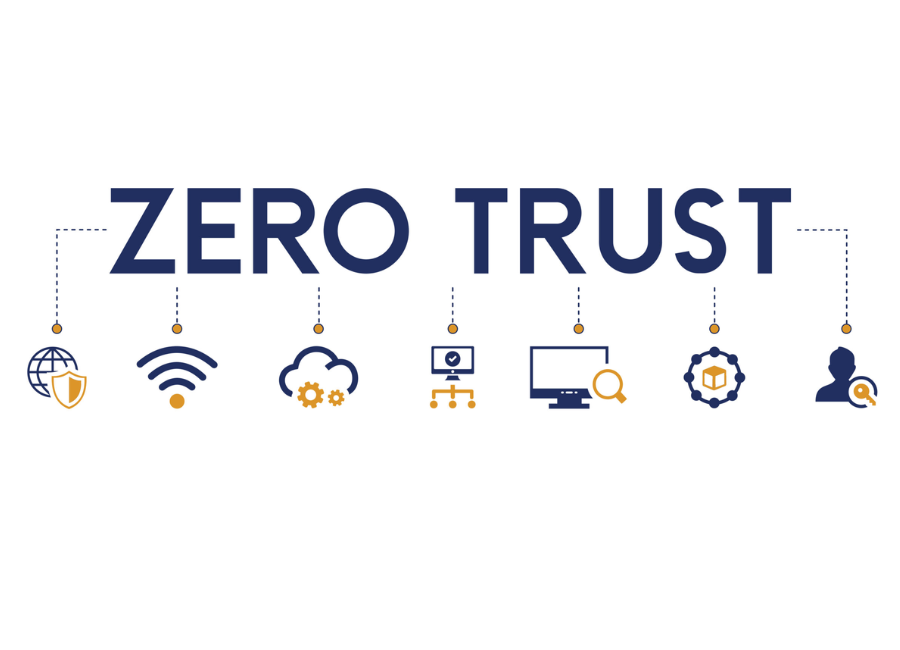Nowadays, data breaches and cyber threats have become more frequent than ever before. Organizations need to rethink their approach to cybersecurity. Traditional methods of securing networks based on trust are no longer enough.
That is why the concept of Zero Trust network access is becoming the fastest-growing segment in network security. According to a Gartner study, it is forecast to grow 31% in 2023, from less than 10% at the end of 2021.
Zero Trust is a forward-looking cybersecurity strategy. It shifts traditional trust-based models to a dynamic and continuous verification approach. In this way, it anticipates and mitigates emerging cyber threats effectively.
How Traditional Approaches to Cybersecurity Are No Longer Sufficient
Traditionally, organizations have relied on perimeter-based security models. This approach means creating a perimeter around the network and trusting all devices and users within that perimeter.
However, the evolving threat landscape and the rise of remote work mean that this model has limitations.
To begin with, employees now access corporate networks from various locations and devices. The rise of remote work blurs the boundaries and makes it challenging to maintain a fixed perimeter.
Cybercriminals have found new opportunities to exploit these porous boundaries. There is an urgent need for a cybersecurity strategy that rises above the notion of perimeter defences.
In a Zero Trust model, trust is not granted by default. Organisations verify trust regardless of a devices or user location. These could be within or outside the corporate network. This Zero Trust approach reduces the attack surface and strengthens security.
Identifying Areas of Trust
To implement Zero Trust effectively, organisations must identify areas of trust and untrust within their network.
Trust is determined based on various factors, and has to be continuously evaluated. Here are some of the concepts used.
Trust and Untrust Zones within a Network
Trust zones are segments within the network where certain users and devices are granted a higher level of trust based on their authentication and authorisation. The factors involved are user roles, device health, or location.
Untrust zones are segments of the network where no entity is trusted. Even if an entity accesses the network, it is subject to continuous monitoring. These zones are designed to be highly secure.
Context-Aware Security
Context-aware security is a fundamental component of the Zero Trust model. It involves taking contextual information into account when making security decisions. This context may include factors such as:
User identity and role.
Device type and health.
Network location (on-premises, remote, or cloud).
Time of access.
Behaviour and usage patterns.
Behaviour Analysis and Anomaly Detection
Behaviour analysis involves monitoring and analysing the typical behaviour of users, devices, and applications within a network. Any deviation from normal behaviour can be flagged as a potential security threat. For example, if an employee attempts to access a sensitive database that they have never accessed before, it may raise doubts.
Anomaly detection involves the automatic identification of unusual patterns or behaviours that could indicate a security breach.
When anomalies are detected, they trigger security responses. Some of these could be additional authentication steps, access restrictions, or alerts to security personnel.
The above approaches allow enterprises to continuously evaluate and adjust trust levels based on real-time information. It makes Zero Trust security a proactive and adaptive approach.
Some Implementation Best Practices
Implementing a Zero Trust strategy involves several best practices, some of which are listed below.
1. Role-Based Access Control: Give people access based on their roles. Ensure that users only have access to the resources necessary for their job.
2. Device Trustworthiness Assessment: Assess the trustworthiness of devices connecting to the network. Some measures are device health checks and endpoint security solutions.
3. User Trustworthiness Evaluation: Evaluate the trustworthiness of users through multi- factor authentication and continuous monitoring of activities.
4. Continuous Monitoring and Authentication: Maintain trust levels by continuously monitoring user and device activities. There should be authentication even for trusted entities.
5. Employee Training and Organisational Buy-In: Ensure that employees are aware of Zero Trust principles. There should be a commitment from all levels of the organisation to enforce this security posture effectively.
Classifying Activities in a Zero Trust Environment
In a Zero Trust environment, activities and data interactions must be classified and monitored strictly. This includes:
Network Activities: Categorise network activities based on the level of sensitivity and criticality. Divide the network into smaller segments and classify traffic based on applications and services.
Anomaly Detection: Use anomaly detection algorithms to identify behaviour that may not match known attack patterns. This helps in detecting zero-day attacks and insider threats.
Identity Verification: Implement strong authentication and identity verification mechanisms such as multi-factor authentication (MFA) to authenticate users and devices before granting access.
Detecting Suspicious Behaviour: Employ techniques like machine learning and real-time monitoring to detect suspicious behaviour and potential threats promptly.
What Can and Cannot Be Implemented
A Zero Trust approach can achieve several cybersecurity objectives. It reduces the chances of unauthorised people messing with your stuff and makes sure only the right folks can get to the important info. But, here the trick: find a balance. Going too strict with Zero Trust might slow things down and annoy your team. Restrictive Zero Trust policies can hinder productivity and create employee frustration.
Organisations need to tailor their approach to specific needs. It requires careful planning and gradual implementation to avoid disruptions.
It is important to involve all stakeholders, including IT teams, security experts, and end-users. The objective should be to strike a balance that doesn’t disrupt business operations and improves security.
In Conclusion
With remote working and rising cyber threats, organisations must embrace a forward-looking cybersecurity strategy. Zero Trust offers a way to adapt to challenges with continuous verification.
A Zero Trust approach works best by following best practices, classifying activities, and finding the right balance.








